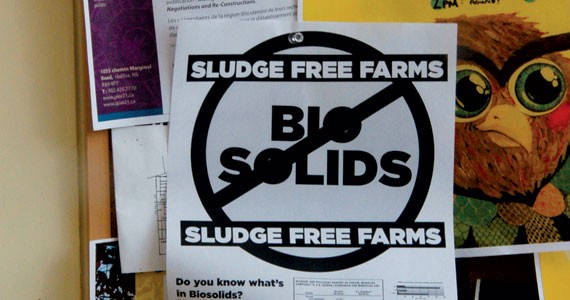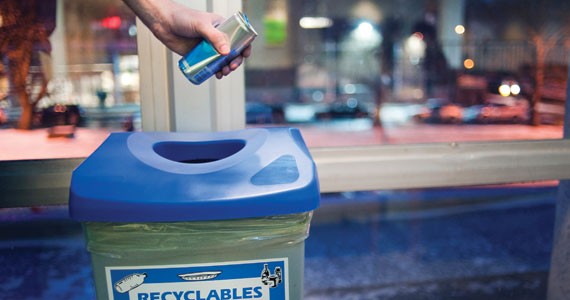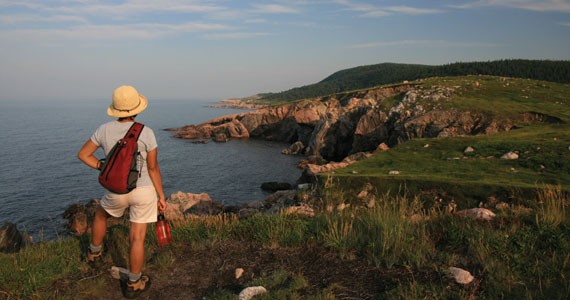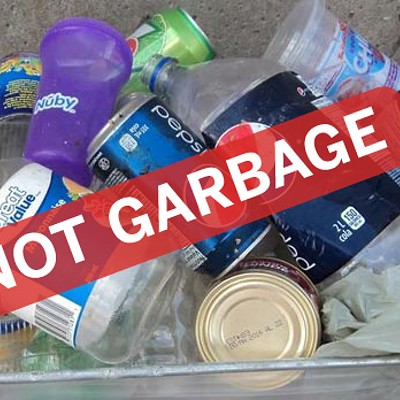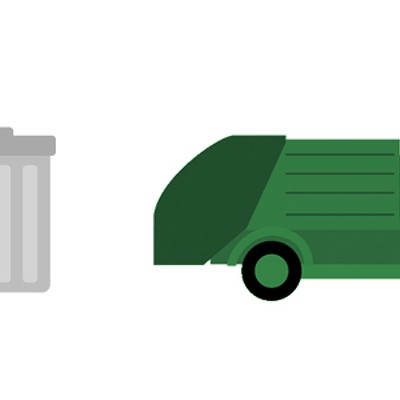BIOSOLIDS
In our 2010 issue of Green Halifax, we did a story on the controversy around the use of biosolids as fertilizer on crop-growing soil. Biosolids are marketed as fertilizers that incorporate human waste---and more problematically, other potentially toxic ingredients---as extracted from sewage sludge. Prominent people in the local food community, the Canadian Horticultural Council and the Canadian Food Inspection Agency all have raised concern over the use of the stuff since learning "emerging substances of concern" found in biosolids could make their way back into the food system.
In October 2011, however, HRM city council voted to lift the year-long moratorium on using biosolids on municipal property. The HRM has a contract to purchase biosolid-based fertilizer from American alternative-energy company N-Viro, though it had halted the application of it when residents on Dunbreck Road had complained about the smell of the stuff being put on property in their neighbourhood. In a story for the Halifax Media Co-op, environmental writer Miles Howe--- who also wrote the biosolids piece for Green Halifax last year--- reported that council's decision to lift the moratorium was based on an underwhelming lit-review focused study by Hydromantis Environmental Software Solutions, which took into account research provided by N-Viro, a company whose interests would be in conflict with any independent study of the matter.
The Food Action Committee of the Ecology Action Centre's position statement is clear it doesn't support the use of biosolids on Nova Scotian agricultural land. "The FAC does recognize the appeal of biosolids because they represent a beneficial reuse of a waste product," allows the committee's document. "However, because biosolids are the product of municipal wastewater systems, which have inputs ranging from human waste to toxic industrial chemicals there continues to be many questions about the eventual fate of the various organic and inorganic contaminants and pathogens contained within biosolids."
"Just the idea that we don't know what our land is going to be used for in future years," says the FAC's Garity Chapman, the urban garden project coordinator. "Parkland can be garden space, or sportsfields can be turned into food-producing spaces. I think if the city wants to further that, it needs to be very careful."
HRM RECYCLING
The Halifax Regional Municipality trumpets that over 60 percent of residents' waste never reaches the landfill, thanks to the current paper and plastic recycling systems. That's a pretty sweet stat. Even more credit should be given now since as of September 1, a much broader collection of plastic can be recycled with identification numbers three, five, six and seven, not just the containers with a number one (polyethylene terephthalate), number two (high-density polyethylene) or bags that are number four.
"It's been in the works for some time," says Shannon Betts, an HRM waste resource analyst, who says the wait allowed the city to find a sustainable market, "a market that would be able to take our product over a long period of time. We also wanted to make sure we knew what was happening with the material. The end market and the user has to show us that they're handling material responsibly and recycling it into a new product rather than it being put in a landfill elsewhere in the world."
That sounds good. So if all this plastic is being turned into different and useful products, where does it get processed? Miller Waste, the Markham, Ontario-based company with a Dartmouth office, services municipalities across the country. In The Coast's "Sustainable City" column on October 20, 2011, Chris Benjamin took a look at the new contract with Miller and noted all HRM's plastic is processed at a plant outside Toronto.
This is certainly a step in the right direction, though the future of recycling is a full-carbon-analysis--- which takes into account the energy expenditure and greenhouse gas emissions of processing and shipping the plastic---as well as processing centre closer to home.
In our 2008 edition of Green Halifax, we wrote about how Scotia Recycling had initiated a pilot project in other parts of the province to recycle that urban blight, theTim Hortons coffee cup. Now Tim Hortons is taking on the responsibility themselves, offering special receptacles that will allow the cups to be recycled into trays. Companies being responsible for their own waste is the way of the future. Legislators, are you reading this?
ECO-TOURISM: WHAT DOES IT TAKE?
Eco-tourism is a concept that has picked up speed with Canadians in the past few years. People want to be able to travel responsibly, to experience the beauty of nature and exotic locales while minimizing damage to the visited ecosystems and to the environment as a whole.
"It's a trend we see our tour suppliers responding to," says Rose Allen of the Adventure Travel Company. "A lot of carbon offset programs, or if you donate a dollar a day to your trip and they will plant a 100 trees in the rainforest, that sort of thing."
Travel company G Adventures has created a non-profit organization called Planeterra that supports local charitable projects in Central America and India. And global bike tours are increasingly popular.
Adventure travel certainly has a foothold in Nova Scotia, but it seems as though the government is good at promoting the cultural side of the province, rather than the environment. But they may be getting with the program.
"We know from our research that outdoor enthusiasts are a significant portion of the visitors to the province," explains communications advisor Toby Koffman, of the province's department of rural development and tourism. "Sixteen percent of the visitors to Nova Scotia motivated to visit primarily to participate in outdoor activities. They tend to stay longer and spend more than the average visitor."
Koffman says it's up to individual businesses to market carbon offset programs, recycling efforts and other ways to be environmentally friendly. But if promotion is a role of the department, Ryan Barry at Great EARTH Expeditions says they could be doing a better job of it.
"Stop advertising Lunenburg and Peggys Cove as the only destinations in Nova Scotia," he suggests. "Nova Scotia Tourism has been talking about the same stuff for 25 years. They've got to start pushing outdoors. We have the world's highest tides.
"National Geographic---that's huge---for three years running labelled Cape Breton as the number two island destination in North America."
Barry's company, where EARTH is an acronym for Eco-Adventures Reach the Heart, gets people to little-seen destinations in the province, promoting the environment and how to conserve it, as well as the history of the people who live here.
"I've talked to representatives of Tourism Nova Scotia, and they seem to be on board and they think it's a great idea to promote Nova Scotia as not only a cultural place but a place of great natural beauty that obviously we need to take care of," says Barry. "It's just a slow process."
NEW PROTECTED WILDERNESS AREA
It's not too often we get to report on a genuinely and unabashedly good news environmental story, but here's one: In October 2011, the provincial NDP government gave the Five Bridge Wilderness area designation under the Wilderness Areas Protection Act.
Thanks the government and to efforts of local environmental organizations---including the Ecology Action Centre, the Five Bridge Lakes Wilderness Heritage Trust and the Woodens River Watershed Environmental Organization---8,600 hectares of crown land on the Chebucto peninsula outside Halifax is now protected from industrial development and will be managed and conserved. It contains a series of lakes, wetlands and even moose, and joins the 38 other wilderness areas across the province.
The best way for people to appreciate what's being conserved here is to walk or cycle the 30 kilometres of the Bluff Wilderness Hiking Trail. For information on locating the trail, visit WRWEO wrweo.ca/BluffTrail/gettingthere.


